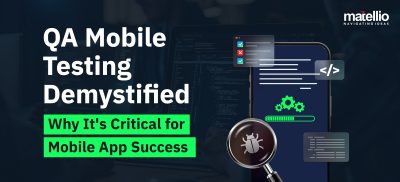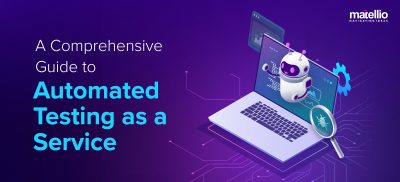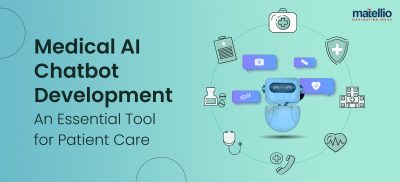
Everyone loves filtered and sorted data, right? There is no juggling between files, no security issues, just plain and simple efficient business operations. The point here is that collecting vast data is one thing. It’s sort of a necessity for every business. But getting that data filtered in a tightly secured manner is the cherry on the top. That’s actually what the debate of fog computing vs edge computing revolves around.
Indeed both technologies help harness the full potential of the cloud. But then what’s the fuss all about? Well, if we take it from the top you need to understand briefly about the cloud. It’s something that is often offered by a third party to store your precious data. Now, this data might originate from anywhere. It could be collected through IoT sensors and then if you have sought cloud integration services, it would land in cloud services such as Amazon Web Services or Microsoft Azure.
In the process of computing the data from the device to the cloud, the tussle of edge computing vs fog computing comes into the picture. So, now that you know the basics let’s understand the difference along with the fact that which one of the computational power work best for your business.
Fog Computing Vs Edge Computing: Understanding the Debate
Before we compare the two, let’s first understand the debate in detail.
Imagine your business network as a vast web of interconnected devices – sensors, controllers, you name it. Here, edge computing will take place right at the ‘edge’ of this network. Picture it as these smart computers placed directly next to or even on top of these devices. These little powerhouses process some or all of the data gathered and then ship it off to the cloud for more processing and storage.
Now, here’s the catch: sending all this data directly to the cloud can overwhelm your system. It can slow things down, reduce efficiency, and pose security risks. This is where fog computing steps in. It’s like adding a smart middle layer between the edge and the cloud. This middle layer or the ‘fog computer’, gets the data from the edge, processes it on the spot, and then decides what to do with it.
Fog computing is smart. It knows what data is important (relevant) and what’s just noise (irrelevant). The important stuff gets sent to the cloud for storage and further analysis. The noise? Well, it’s either deleted or sent to a local platform that can handle it.
So, we can say that edge computing vs fog computing doesn’t necessarily have to be a debate. The two technologies can team up to make sure your system works super fast (minimizing delays) and use the cloud in the smartest way possible, making your business operations efficient and smooth. And that’s not all. If you are seeking or planning to seek IoT development services, you can greatly benefit from this strategic duo.
About Edge Computing
Imagine you have a network of devices – sensors, laptops, smartphones, etc. Now, instead of sending all the data these devices generate to a far-off central processing system, edge computing brings that processing power right to the devices themselves. This approach is different from fog computing. So, one can say the approach is behind the edge computing vs fog computing argument. But if we stick just to edge computing, here’s why it’s awesome:
 Speedy Processing
Speedy Processing
Edge computing shrinks processing time because it doesn’t waste time shuttling data back and forth. It processes the data right where it’s created. This means your data gets sorted and analyzed faster.
 Bandwidth Saver
Bandwidth Saver
Since data doesn’t have to travel long distances, it saves internet bandwidth. This is great news because it keeps your internet costs down and ensures your network doesn’t get clogged with data traffic.
 Remote Accessibility
Remote Accessibility
It’s a game-changer for remote locations. Even if your connection is shaky, edge computing keeps applications running smoothly. So, you can use high-tech applications in places where internet connections are not so reliable.
 Security Boost
Security Boost
Edge computing enhances security because it reduces the need to interact with public clouds. This means your sensitive data isn’t exposed to unnecessary risks. On top of this, digital transformation services can leverage the advantages of edge computing to innovate and optimize processes for you.
Where Edge Computing Shines: Real-Life Applications
Now, where does edge computing really shine? Why is it even involved in the fog computing vs edge computing debate? Think of situations where processing data in real-time is crucial. Here are some examples:
 Autonomous Vehicles
Autonomous Vehicles
Cars that drive themselves need split-second decision-making. Edge computing ensures these decisions are lightning-fast.
 IoT-Based Gadgets (Internet of Things)
IoT-Based Gadgets (Internet of Things)
Smart homes, industrial sensors, wearable devices – all these IoT gadgets generate heaps of data. Edge computing handles this data in a snap.
 SaaS and Web Content
SaaS and Web Content
For services like Google Workspace or streaming platforms, edge computing ensures your experience is seamless and quick.
 Voice Assistants
Voice Assistants
Ever wondered how your smart speaker understands you so fast? Edge computing is the magic behind it.
 Predictive Maintenance
Predictive Maintenance
Industries use sensors to predict when machines might break down. Edge computing processes this data instantly, preventing costly downtime.
 Traffic Management
Traffic Management
Smart traffic systems need real-time data to adjust signals and flow. Edge computing ensures cities run smoothly.
Also Read: How Cloud Services Can Accelerate Your Digital Transformation Journey?
About Fog Computing
When we talk about fog computing vs edge computing, remember that these can be like computing “steps” that take place when data travels from the actual source of data to the cloud. Now with this clarity, you can imagine fog computing as a layer of decentralized enterprise computing. Bringing data processing closer to the point from where it’s collected, fog computing can make several processes a breeze for you. Here’s how it works:
Getting Closer to Data
Fog computing places a smart layer right at the heart of your data source, just like fog settles close to the ground. This means your data doesn’t have to travel far for processing. It happens right at the edge, where your devices are.
Efficiency Boost
Like a well-oiled machine, fog computing enhances efficiency. It handles tasks like quick analysis and processing, saving time and energy. For instance, think of fitness trackers that instantly show your stats without delays. That’s fog computing at play. So, if you are considering product development services, do not forget to recall the fog!
The Power of Complementing
Fog computing isn’t here to replace the cloud; it’s a partner in crime. While the cloud handles heavy tasks requiring lots of power, fog computing takes care of the immediate, lighter tasks at the edge. It’s a tag team, ensuring your data gets both the quick attention it needs and the deep analysis it deserves.
Bridging the Gap
Sometimes, devices at the edge lack the brainpower for advanced tasks like machine learning. On the other hand, the cloud, though mighty, might be too far away for these tasks to be done quickly. In the realm of fog computing vs edge computing, fog computing steps in, providing the necessary processing power right where it’s needed, making complex operations smooth and seamless. By connecting edge devices to localized fog nodes, businesses can ensure efficient processing of intricate tasks without compromising speed. It’s the bridge that brings intelligence to the edge, ensuring your operations are both powerful and swift.
Security and Compliance
Sending sensitive data to a far-off cloud server can be risky, especially due to regulations. Fog computing ensures a private, secure, and compliant environment. It keeps your data safe and your business in line with the rules.
Also Read: What is Cloud Business Intelligence and How It Helps Businesses Grow?
Real-Life Applications
 Smart Cities
Smart Cities
Traffic management systems analyzing data in real-time for smooth flow.
 Smart Homes
Smart Homes
Devices instantly respond to your commands, making your home truly intelligent.
 Smart Grids
Smart Grids
Power systems adjust instantly based on usage patterns, saving energy efficiently.
 Software-defined networking (SDN)
Software-defined networking (SDN)
Networks adapting on the fly to ensure seamless connections.
In a nutshell, fog computing is your local tech hero, ensuring your data is processed swiftly, securely, and intelligently. It’s like having a savvy assistant right in your business, making sure everything runs like clockwork.
Fog Computing Vs Edge Computing: Which One is Best for Your Business?
It’s time for the final face-off! Now that you know the basics about edge computing and fog computing, let’s compare the two to determine which one suits your business, the best.
Definition: Edge Computing vs. Fog Computing
Edge Computing
Imagine processing data as close to the source as possible, like on your employee laptops or IoT devices. This minimizes data transfers to the cloud, saving both time and money.
Fog Computing
Often called a cousin of edge computing, fog computing does something similar but with a twist. It processes data close to the edge, yet not necessarily on the same device that collects it. Think of it as a smart middleman, reducing the load on both edge and cloud systems.
| Parameter | Edge Computing | Fog Computing |
|---|---|---|
| Definition | Processing data on devices like laptops or IoT. | Processing data near the edge, not necessarily on the same device. |
| Bandwidth Use | Minimizes data transfers to the cloud. | Smart intermediary, reducing load on both edge and cloud systems. |
| Example | Data can be processed on smartphones or IoT devices. | Processing tasks happening close to both edge and cloud. |
Scope of Operation: Fog Computing Vs Edge Computing
Edge Computing
Happens on employee devices or IoT gadgets. These devices might not always be the ones collecting data.
Fog Computing
Operates in scenarios where cloud platforms are far away, and edge devices are resource-limited or scattered. It’s like the bridge between the edge and the cloud.
| Parameter | Edge Computing | Fog Computing |
|---|---|---|
| Deployment | Employee devices or specific edge computers. | Smart nodes bridge the gap between edge and cloud systems. |
| Functionality | Data processing for business apps can be transmitted to the cloud. | Reduces load on both edge and cloud systems, ensuring efficiency. |
| Example | Patient monitoring devices connecting to smartphones. | Autonomous vehicles process real-time data efficiently. |
Real World Applications: Edge Computing Vs Fog Computing
Edge Computing
Great for less resource-intensive tasks like predictive maintenance and real-time gaming.
Fog Computing
Perfect for time-sensitive applications requiring high-volume, intensive data processing.
| Parameter | Edge Computing | Fog Computing |
|---|---|---|
| Use Cases | Predictive maintenance, real-time gaming, healthcare apps. | Autonomous vehicles, smart grids, real-time analytics with AI/ML. |
| Benefits | Low latency, efficient for less complex tasks. | High-volume data processing is vital for real-time complex analytics. |
Processing And Storage: Fog Computing Vs Edge Computing
Edge Computing
Data is processed and stored on the edge device or very close to it, often on devices like smartphones.
Fog Computing
Acts as a gateway, connecting multiple edge devices, and creating a network for efficient processing and storage.
| Parameter | Edge Computing | Fog Computing |
|---|---|---|
| Location of Processing | On edge devices or close to them. | Connects multiple edge devices, offering a network for efficient processing. |
| Example | Your smartphone processing data locally or near it. | IIoT environment in a manufacturing plant, ensuring efficient data processing. |
Economic Considerations: Edge Computing Vs Fog Computing
Edge Computing
Services offered by big names like Microsoft and Amazon, with fixed fees based on usage. You can even set up your own, but it might be costlier.
Fog Computing
A customized version might require setting up from scratch. While it can be pricier, it offers significant savings in bandwidth, latency, computing, and storage.
| Parameter | Edge Computing | Fog Computing |
|---|---|---|
| Providers | Vendors with fair industry prices and customization expertise. | Customized setups are potentially pricier but cost-efficient in the long run. |
| Cost Consideration | Cost-effective options are the best | Offers substantial savings in various areas, making it a wise investment. |
Thus, when deciding between the two computing options, consider your business needs carefully.
So, Which Form of Computing is Ideal for Your Business?
Edge computing is ideal for straightforward tasks, minimizing data transfers and ensuring low latency. It’s cost-effective, especially for smaller operations. Whereas, fog computing shines in complex, time-sensitive applications, efficiently processing vast data volumes. While it might require a bit more investment upfront, its benefits in terms of bandwidth, latency, and storage savings are substantial. If your business deals with real-time analytics, autonomous systems, or resource-intensive processes, fog computing could be your game-changer.
So, the bottom line is that you should assess your requirements and make the choice that aligns with your business goals and budget.
Making Sense of Fog Computing Vs Edge Computing by Seeking Matellio’s Expertise
At Matellio, we understand the pulse of modern businesses. In the realm of fog computing vs edge computing, our expertise becomes your guiding light. Wondering which approach aligns perfectly with your business goals? Seek our technology consulting services. Our seasoned professionals not only decode the technical jargon but also tailor solutions to suit your unique needs.
We dive deep into your requirements, demystify the intricacies, and provide a roadmap that ensures your business operates seamlessly. With our innovative strategies and comprehensive understanding of both fog and edge computing, we empower you to make informed decisions.
Let’s transform your business landscape together. Trust Matellio to navigate the fog computing and edge computing maze, making your journey not just insightful but also remarkably successful. Fill out this form now!
 Speedy
Speedy  Bandwidth Saver
Bandwidth Saver Remote Accessibility
Remote Accessibility Security Boost
Security Boost
 Autonomous Vehicles
Autonomous Vehicles IoT
IoT SaaS
SaaS Voice Assistants
Voice Assistants Predictive Maintenance
Predictive Maintenance Traffic Management
Traffic Management Smart Cities
Smart Cities Smart Homes
Smart Homes Smart Grids
Smart Grids Software-defined networking (SDN)
Software-defined networking (SDN)



